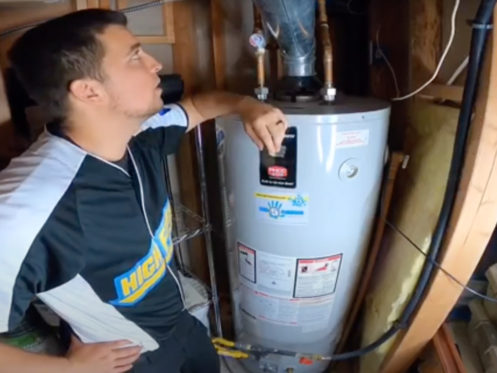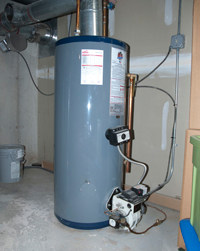Effective Methods to Care for Your Home's Hot Water System Effectively
Effective Methods to Care for Your Home's Hot Water System Effectively
Blog Article
This post directly below in relation to Tips For Maintaining Your Hot Water Heater is definitely motivating. You should look it over.

Warm water is vital for daily comfort, whether it's for a revitalizing shower or cleaning meals. To ensure your warm water system runs effectively and lasts longer, normal upkeep is essential. This article supplies practical pointers and understandings on how to keep your home's warm water system to prevent disruptions and pricey repair services.
Introduction
Keeping your home's hot water system could seem difficult, but with a couple of easy actions, you can ensure it runs smoothly for years ahead. This guide covers every little thing from comprehending your warm water system to DIY upkeep suggestions and knowing when to employ professional aid.
Significance of Keeping Your Hot Water System
Routine maintenance not just prolongs the life-span of your hot water system however also ensures it runs successfully. Overlooking upkeep can bring about decreased effectiveness, greater energy expenses, and even early failing of the system.
Signs Your Warm Water System Demands Maintenance
Knowing when your hot water system needs focus can stop significant problems. Watch out for indications such as inconsistent water temperature, unusual noises from the heating unit, or corroded water.
Understanding Your Hot Water System
Prior to diving into maintenance tasks, it's practical to understand the basic elements of your warm water system. Generally, this includes the hot water heater itself, pipelines, anode poles, and temperature controls.
Monthly Maintenance Tasks
Routine monthly checks can help catch minor concerns prior to they intensify.
Flushing the Water Heater
Purging your hot water heater removes sediment buildup, improving effectiveness and lengthening its life.
Monitoring and Changing Anode Rods
Anode poles prevent corrosion inside the tank. Examining and replacing them when broken is critical.
Inspecting and Adjusting Temperature Setups
Readjusting the temperature level settings guarantees optimal performance and safety.
DIY Tips for Maintenance
You can perform several maintenance tasks yourself to maintain your warm water system in leading problem.
Checking for Leaks
On a regular basis check pipelines and connections for leaks, as these can lead to water damage and greater costs.
Examining Stress Alleviation Valves
Checking the pressure safety valve guarantees it works appropriately and prevents too much pressure buildup.
Insulating Pipelines
Protecting hot water pipelines minimizes warm loss and can save power.
When to Call an Expert
While DIY maintenance is beneficial, some concerns need professional expertise.
Facility Problems Requiring Professional Aid
Examples consist of significant leaks, electric problems, or if your water heater is consistently underperforming.
Regular Expert Upkeep Perks
Professional upkeep can include extensive inspections, tune-ups, and making certain compliance with safety and security requirements.
Verdict
Routine upkeep of your home's warm water system is important for performance, durability, and price savings. By adhering to these suggestions and recognizing when to seek specialist assistance, you can make certain a reputable supply of warm water without unforeseen disturbances.
How to Maintain an Instant Hot Water Heater
Before tinkering with your hot water heater, make sure that it’s not powered on. You also have to turn off the main circuit breaker and shut off the main gas line to prevent accidents. Also turn off the water valves connected to your unit to prevent water from flowing into and out of the appliance. 2. When you’re done, you have to detach the purge valves’ caps. These look like the letter “T†and are situated on either side of the water valves. Doing so will release any pressure that has accumulated inside the valves while at the same time avoid hot water from shooting out and burning your skin. 3. When the purge valves’ caps are removed, you have to connect your hosing lines to the valves. Your unit should have come with three hoses but if it didn’t, you can purchase these things from any hardware or home repair shops. You can also get them from retail stores that sell water heating systems. Read the user’s manual and follow it to complete this task properly. When the hosing lines are connected, open the purge port’s valves. 4. You should never use harsh chemical cleaners or solutions when cleaning your unit. Make use of white vinegar instead. It should be undiluted and you’ll probably use about 2 gallons. 5. Now flush your water heater. This task should probably take about 40 minutes. We can’t give you specific directions for this because the procedure is carried out depending on the type, model and brand of your heater. With that being said, refer to the user’s manual. 6. When you’re done draining the unit, you have to turn off the purge port valves again. Remove the hosing lines that you earlier installed on each of the water valves. Put the valve caps (purge port) back in their respective places and be very careful so as not to damage the rubber discs that are found inside these caps. 7. Now that everything’s back in place, check your user’s manual again to find out how to reactivate your water heating system. 8. Once it is working, turn one of your hot water faucets on just to let air pass through the heater’s water supply pipes. Leave the tap on until water flows smoothly out of it. https://www.orrplumbing.com/blog/2014/september/how-to-maintain-an-instant-hot-water-heater/

I was made aware of that editorial about How to Maintain a Hot Water Heater in a Few Simple Steps from someone on our other domain. Make sure you take a moment to distribute this blog if you liked it. Thanks for your time invested reading it.
Prices & Booking Report this page